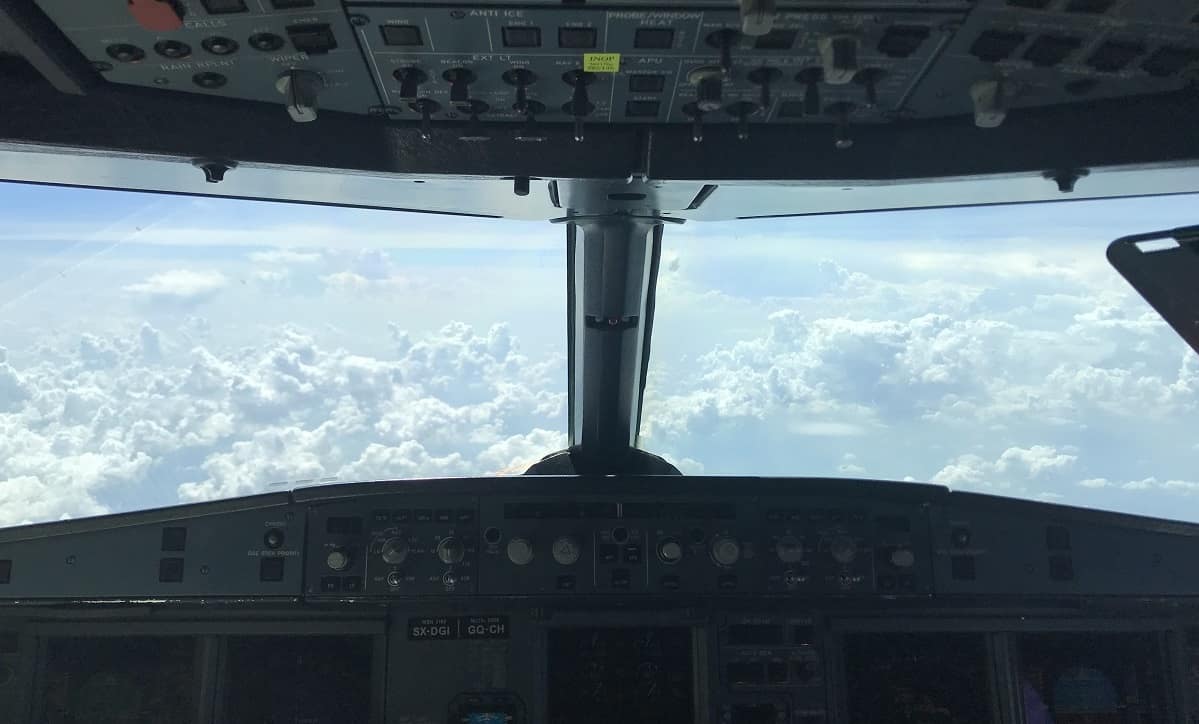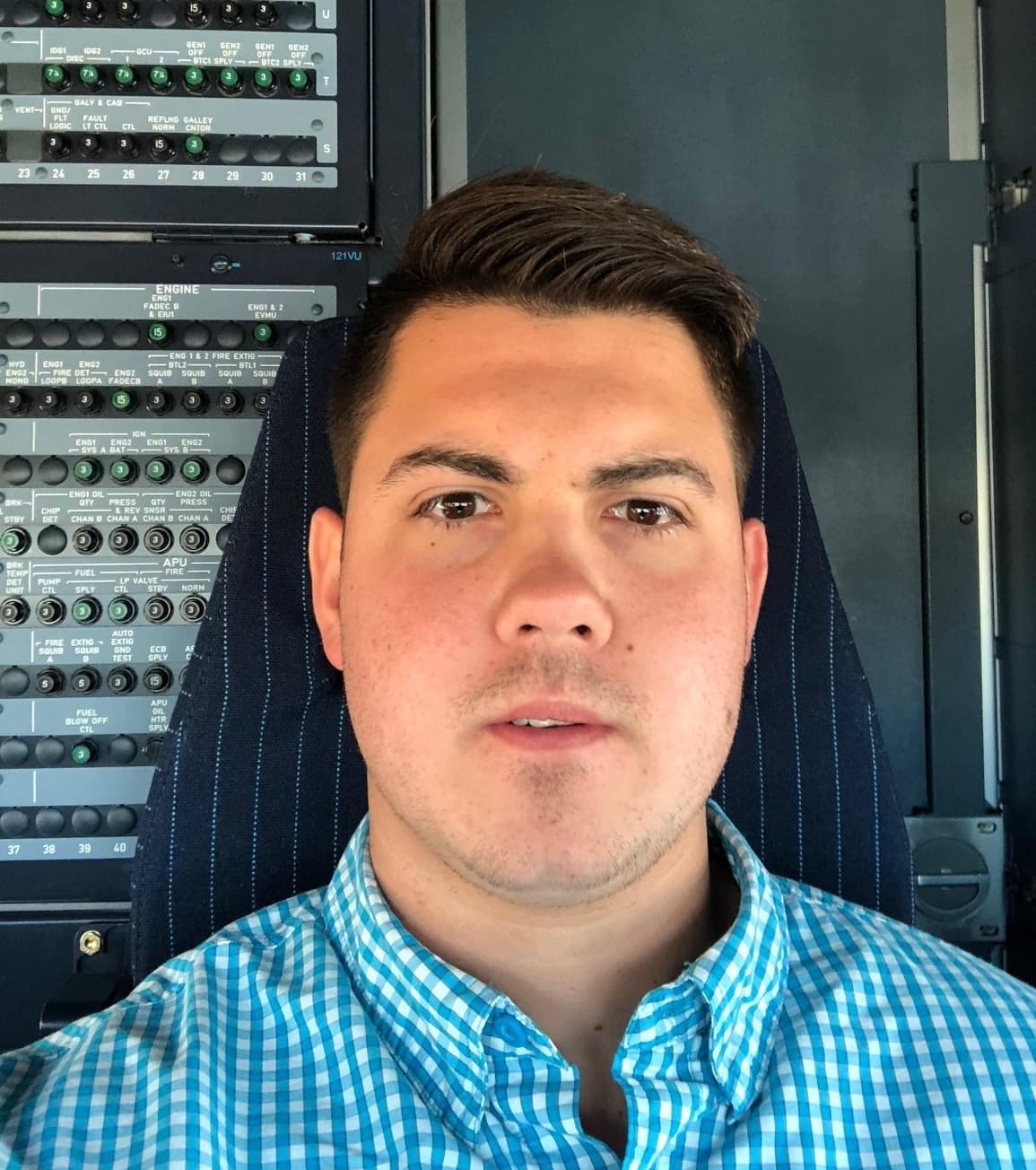The New First Class: Flying Jump Seat

There is always that one thing at the top of everyone’s list. Their bucket list, that is. Fulfilling that top item brings people happiness and a feeling of completion toward the good life. For me, the day Aegean Airlines generously allowed me up front with the pilots was the day I realized flying jump seat was at the top of my bucket list.
Flying jump seat meant that I sat inside the cockpit, right behind the captain and first officer, of an Airbus A320 flight from Thessaloniki to Athens, Greece.
After four days of working with Aegean Airlines through a collaboration between Embry-Riddle Aeronautical University and Get Lost’s study abroad program in Greece, our fifth day was a surprise. A surprise in the form of flying jump seat - an experience I will never forget.
From the moment I walked onto the aircraft, I knew something amazing was going to happen. Upon entering the flight deck, a flight attendant escorted us to our seats in the cabin while two other students went to the cockpit. Initially, I was worried I would miss out on something. We flew from Athens to Thessaloniki, wondering when it would be our chance to sit in the cockpit. And it never happened.
But then there was the return flight. It was finally my turn to take jump seat. I sat down on an uncomfortable chair, right behind the center pedestal of the cockpit, with a five-point harness seat belt strapping me in. Such a seat and seat belt are normally reserved for maintenance personnel and pilot examiners – it’s rare that an average passenger ever gets the chance to access the amazing 180-degree views.

Attila Szucs
Prior to the flight, I was educated about a “sterile cockpit.” This meant that visitors in the cockpit are not to be a distraction, but to be another set of eyes, or two sets of eyes in our case. The only time we could legally ask questions was after we reached 30,000 feet. In time, our captain was happy to engage in conversation and got into a full-blown debate about pirates in Somalia.
It was only during the final descent that I realized, in less than 45 minutes, we had arrived in Athens. I was too busy observing all that went on in the cockpit. Because of our interaction with the captain, I forgot that I was inside an airliner cockpit during a scheduled flight. After a seamless landing, the flight crew said goodbye and off we were with the rest of our day.
Flying jump seat isn’t an opportunity most people get to enjoy. For most people, the airplane’s cockpit is a sacred place. Years ago, an airplane cockpit did not have a door. Passengers could walk up to the cockpit at almost any time to enjoy the view. I think we all know an open flight deck is impossible today. However, I’m convinced the ticket market would change if airlines offered the jump seat experience at a cost.
If I had the chance, I would fly jump seat on all of my flights. As uncomfortable as that chair was, the experience it offered was better than any premium economy, business class, or first-class ticket. Aegean Airlines, voted Europe’s best regional carrier, would undoubtedly become Europe’s richest, and dare I say coolest regional carrier, if they could adapt this new way of flying for a mass market. I have no doubt flight enthusiasts would pay an extraordinary amount of money to enjoy the experience I was privileged enough to enjoy through Embry Riddle’s study abroad program, and of course, Aegean Airlines.
Attila Szucs is an aviation maintenance science student at Embry-Riddle Aeronautical University in Daytona Beach. Dr. Rachel Silverman is an associate professor of communication who teaches a travel communication course. The summer experience in Greece was coordinated through Embry-Riddle’s Office of Global Engagement.
